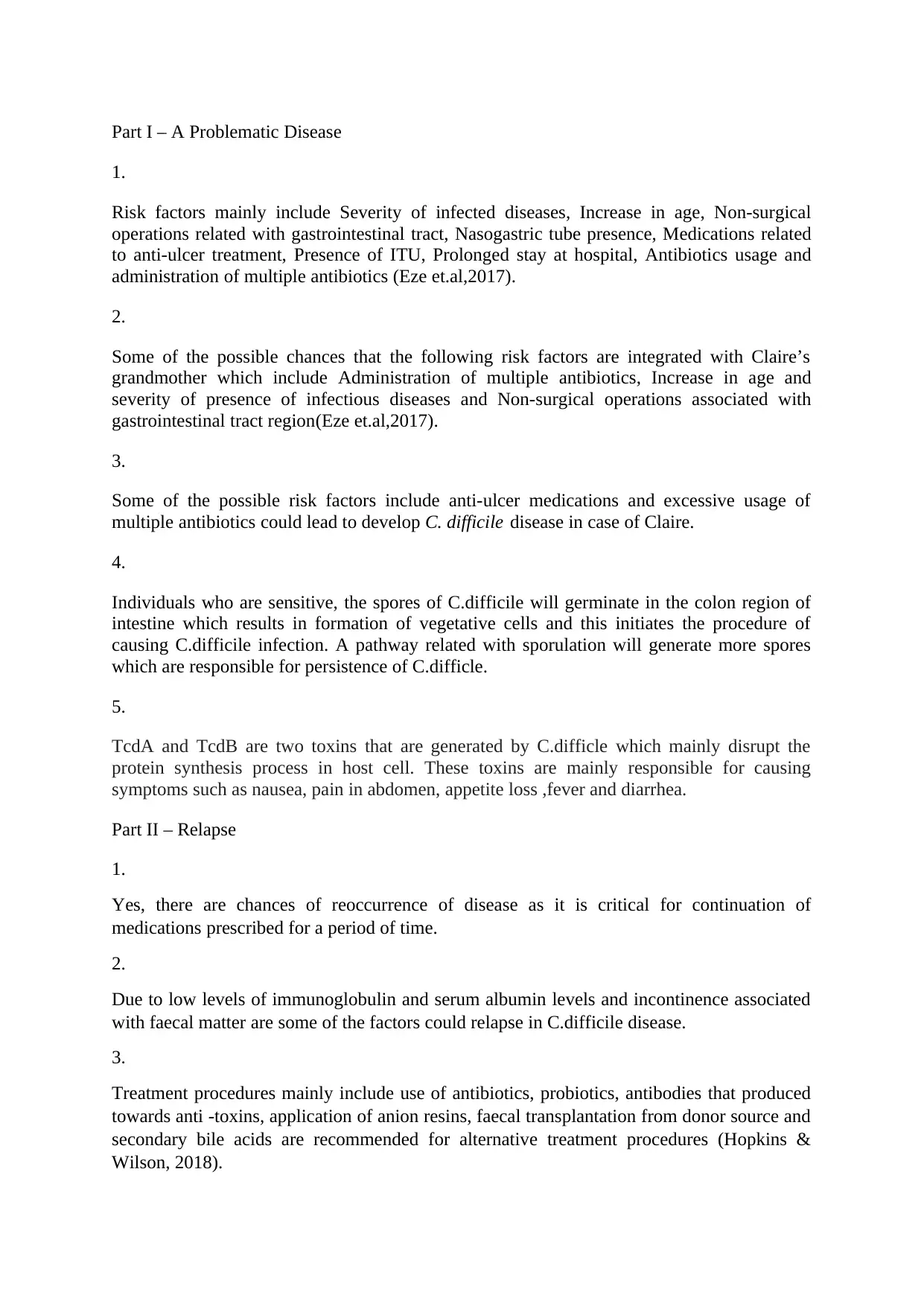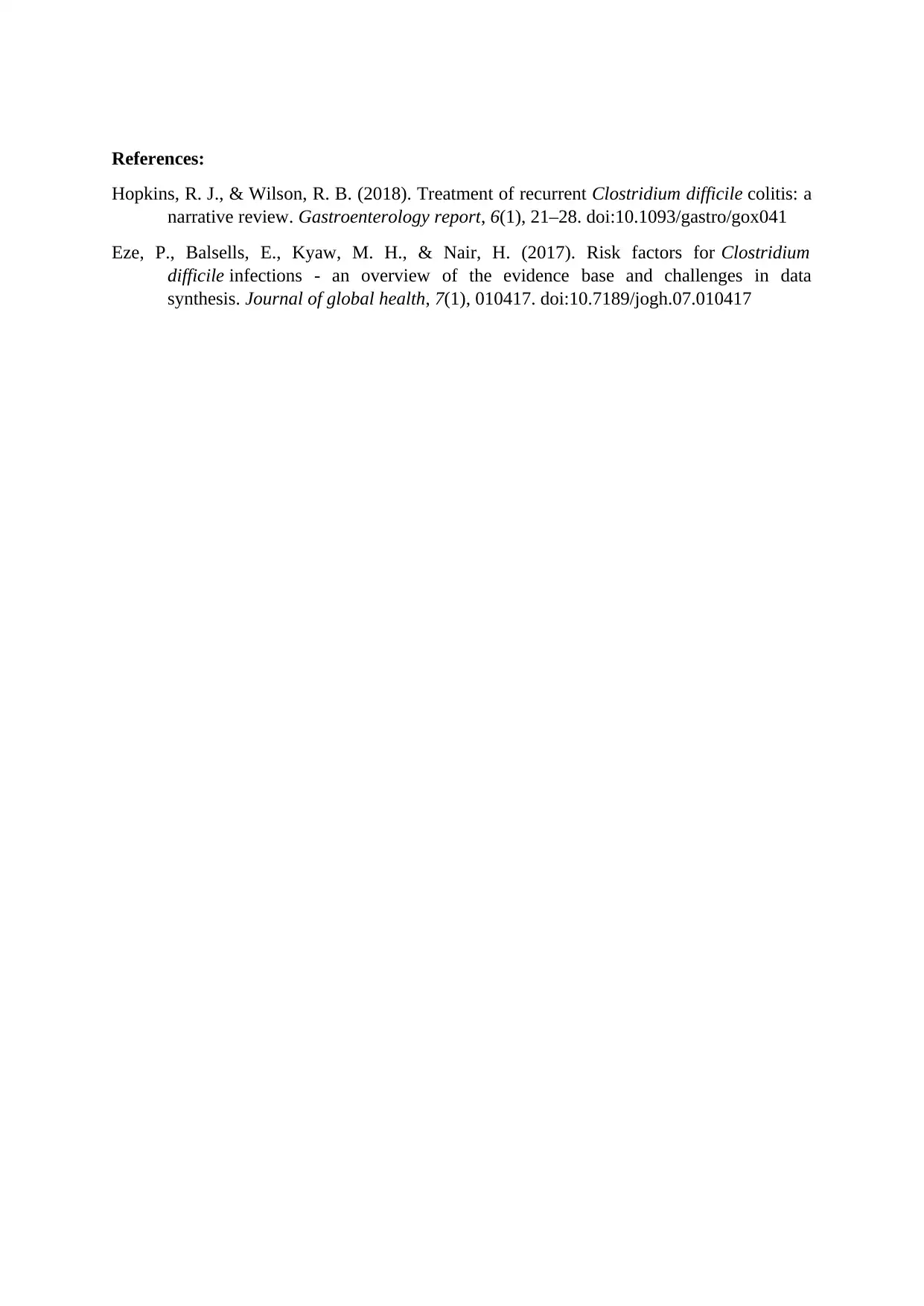Analysis of C. difficile Infection: Risk Factors, Relapse, Treatment
VerifiedAdded on 2022/09/11
|2
|434
|16
Report
AI Summary
This report provides a detailed analysis of Clostridium difficile (C. difficile) infection, addressing its various aspects. Part I focuses on the risk factors associated with the disease, including factors such as age, previous antibiotic usage, and gastrointestinal procedures. The report also examines the role of C. difficile spores and toxins (TcdA and TcdB) in the infection process. Part II explores the potential for disease relapse, discussing factors like low immunoglobulin levels and fecal incontinence. Finally, the report outlines various treatment options, including antibiotics, probiotics, and fecal transplantation. References to relevant research papers are also included to support the analysis.
1 out of 2



![[object Object]](/_next/static/media/star-bottom.7253800d.svg)